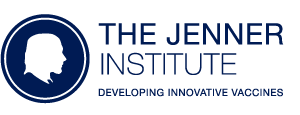Toll-Like Receptor Activation by Generalized Modules for Membrane Antigens from Lipid A Mutants of Salmonella enterica Serovars Typhimurium and Enteritidis
Rossi O., Caboni M., Negrea A., Necchi F., Alfini R., Micoli F., Saul A., MacLennan CA., Rondini S., Gerke C.
ABSTRACTInvasive nontyphoidalSalmonella(iNTS) disease is a neglected disease with high mortality in children and HIV-positive individuals in sub-Saharan Africa, caused primarily by Africa-specific strains ofSalmonella entericaserovars Typhimurium and Enteritidis. A vaccine using GMMA (generalized modules for membrane antigens) fromS.Typhimurium andS.Enteritidis containing lipid A modifications to reduce potentialin vivoreactogenicity is under development. GMMA with penta-acylated lipid A showed the greatest reduction in the level of cytokine release from human peripheral blood monocytes from that for GMMA with wild-type lipid A. Deletion of the lipid A modification genesmsbBandpagPwas required to achieve pure penta-acylation. Interestingly, ΔmsbBΔpagPGMMA fromS.Enteritidis had a slightly higher stimulatory potential than those fromS.Typhimurium, a finding consistent with the higher lipopolysaccharide (LPS) content and Toll-like receptor 2 (TLR2) stimulatory potential of the former. Also, TLR5 ligand flagellin was found inSalmonellaGMMA. No relevant contribution to the stimulatory potential of GMMA was detected even when the flagellin protein FliC fromS.Typhimurium was added at a concentration as high as 10% of total protein, suggesting that flagellin impurities are not a major factor for GMMA-mediated immune stimulation. Overall, the stimulatory potential ofS.Typhimurium andS.Enteritidis ΔmsbBΔpagPGMMA was close to that ofShigellasonneiGMMA, which are currently in phase I clinical trials.

